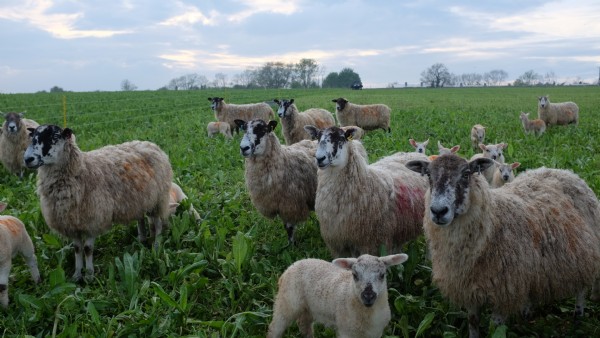

Anthelmintic plants are basically natural wormers.
Worms or gastrointestinal nematodes, in small ruminants and cattle can cause disease and lead to production and economic losses (eg. poor growth rates, drop in milk yield) if not controlled. Each year, farmers spend around £80 million on synthetic anthelmintics or drenches (wormers). They are generally highly efficient, cheap and user friendly and their application is therefore widespread in intensive farming. However, this has resulted in the emergence of drug-resistant worms in sheep and goats and also, to a lesser extent, in cattle.
Anthelmintic plants - chicory, sainfoin and birdsfoot trefoil - provide alternative solutions to control parasites in livestock and have been the subject of studies in two successive EU projects ‘Healthy Hay’ and ‘LegumePlus.’
Some plants such as sainfoin and birdsfoot trefoil contain condensed tannins in their leaves and stems. These can reduce worm burdens. In the last decade there has been considerable scientific progress in understanding the effect these tannins have on livestock.
The consumption of sainfoin disrupts the biology of the three main stages of the parasite life cycle; the eggs, the infective larvae and the adult worms.
Good grazing management, and the feeding of bioactive forages like sainfoin contribute to lower the contamination of pasture and the risk of animal infection. Sainfoin and other tannin containing forages can be exploited in different forms. All forms including grazing, silage, hay and pelleting have shown anti-parasitic properties in studies with sheep and goats.
Links the the species and mixtures containing these anthelmintic plants are below:
- Chicory
- Birdsfoot Trefoil
- Sainfoin
- Herbal Over-Seeding Mixture - Deep Rooting Herbal Ley
- Herbal Over-Seeding Mixture 70% Organic
- 'HERBAL' Grazing Ley - Four Year Drought Resistant Ley
- GS4 Legume & Herb Rich Sward
- Legume and Herb Rich Sward (Whole Field Option) 70% Organic
- Orchard Clover Understory Mixture
- AB1 The Operation Pollinator Mix (Just Legumes)
- The Operation Pollinator Just Legumes 70% ORGANIC
- Pollen & Nectar Mix Grass & Legume Margin
- Pollen & Nectar Flower Mix Grass & Legume Margin 70% ORGANIC
- AB15 Autumn Sown Two Year Legume Fallow
- Worming Paddock Mixture
- Worming Paddock Mixture 70% Organic
- Final Trimester High Nutrient Boost - Strip Grazing
Date Posted: 18th January 2018



